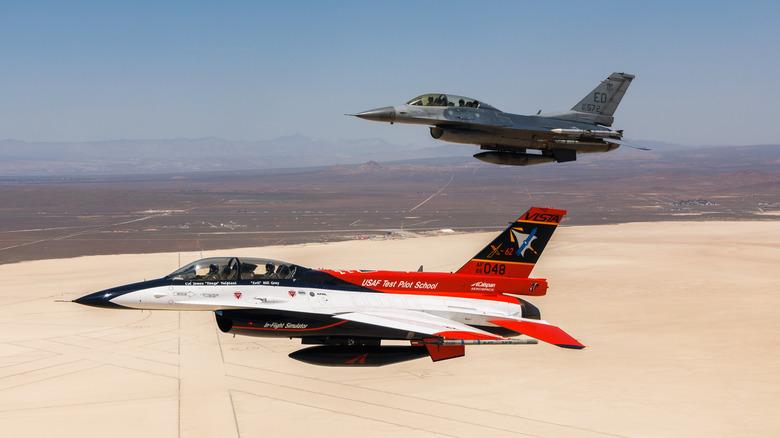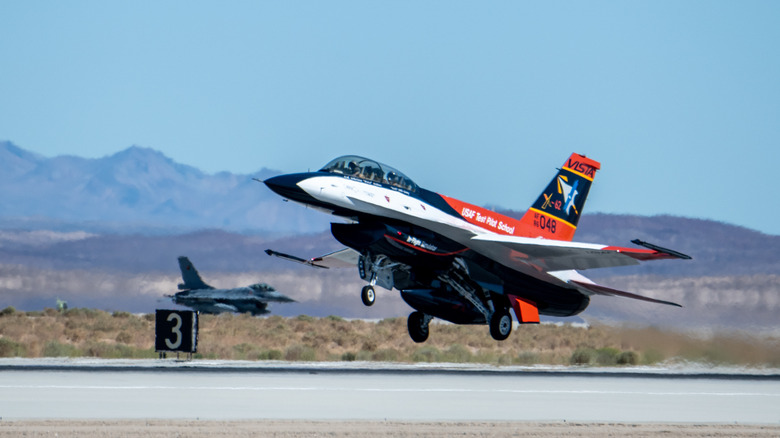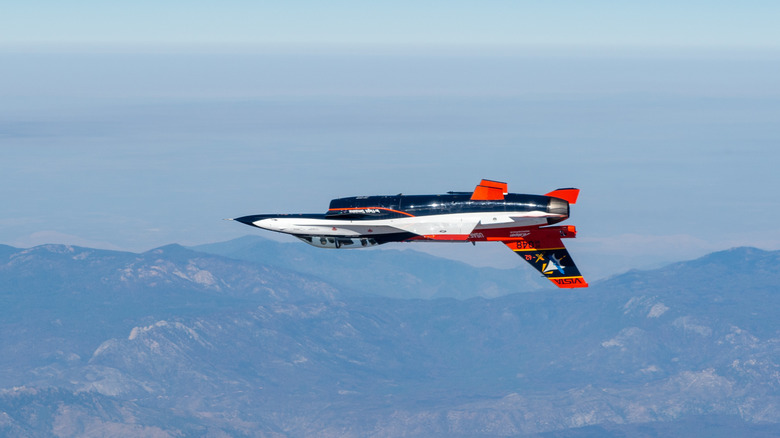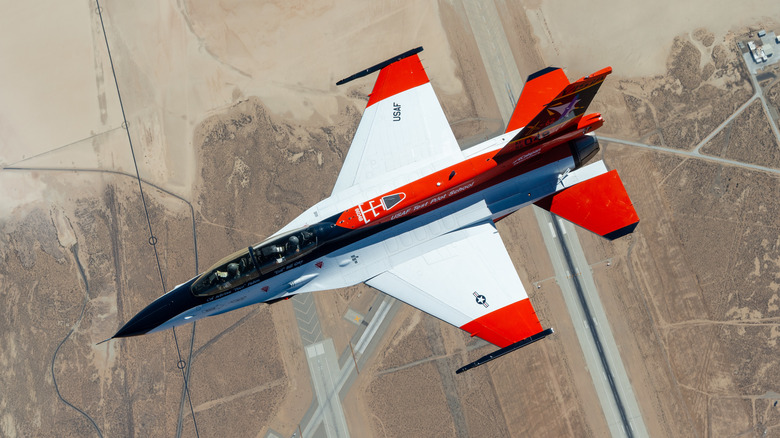AI Piloted An F-16 Against A Human In A Dogfight: Here's What Happened
In the world of combat aviation, there's a famous lesson. One must fly with their head, not the muscles. Follow that golden rule, and the pilot lives a long life. Putting more faith in muscles means the chances of the pilot making it to the pension collection phase of their life are slim.
Over the years, films like "Top Gun," "Dunkirk," and "Wings" have glamorized the art of aerial warfare, romanticizing it as some kind of apex demonstration of human physical and psychological might. What if the combatant next to you in a vicious dogfight is not human at all? That's exactly what the Defense Advanced Research Projects Agency aims to accomplish with one of its flagship projects.
In fact, the research and development agency of the United States Department of Defense has already achieved a milestone by pitting a human pilot against an AI in control of a modified F-16 fighter jet in a dogfight earlier this year. In April this year, the agency announced that its X-62A Variable In-Flight Simulation Test Aircraft (VISTA) powered by AI algorithms went head to head against a human piloting an F-16 in a dogfight.
The X-62 is a specially modified two-seat F-16 test aircraft developed in collaboration with Lockheed Martin. It was only in 2022 that the experimental aircraft was first uploaded with an AI system and launched into the first series of test flights at the Edwards Air Force Base in California.
The end goal
During its dogfight exercise against human pilots, the X-62A relied on what the military calls non-deterministic artificial intelligence and started with defensive maneuvers. But as the tests progressed, it switched to attack mode reminiscent of real aerial combat scenarios moving at speeds of 1,200 miles per hour, close to Mach 1.5 speeds. During the test, the AI-piloted jet came within a range of 2,000 feet against the human-piloted F-16 as part of the "offensive high-aspect nose-to-nose engagements."
Notably, the AI handled the entire sequence on its own without requiring any kind of human intervention. "The X-62A is flown with safety pilots onboard with the independent ability to disengage the AI. However, test pilots did not have to activate the safety switch at any point during the dogfights over Edwards," said the press release from the Edwards Air Force Base.
This was the first-ever deployment of machine-learning-based autonomy in flight-critical systems, and it seems experts in the defense lines are fairly confident that the X-62A is a viable combat approach for the future of aerial warfare. "We've fundamentally changed the conversation by showing this can be executed safely and responsibly, Col. James Valpiani, commandant of the Test Pilot School, was quoted as saying.
But it seems dogfighting was not the overarching goal, but merely a problem that required a demonstrable solution. Instead, the exercise was more like a platform to "start testing autonomous artificial intelligence systems in the air," according to the school's chief test pilot, Bill Gray.
How did machine fare against man?
One of the biggest differences between ACE and other forms of autonomous vehicle-based operations — ranging from unmanned rescue aircraft to space missions — is the fact that it relies on machine learning, and not merely pre-programmed lines of code with a specific set of operational instructions. ACE made Machine Learning a reality in the air," says a DARPA video. In September 2023, the team took the VISTA for the first time on an aerial trip alongside a human-piloted F16 jet.
Aerial combat, especially dogfighting, is inherently perilous. So, the biggest task for the team to accomplish was demonstrating if machine learning can prove its effectiveness in such high-risk scenarios, it will significantly enhance human trust in AI capabilities. Notably, as the VISTA test aircraft flew against humans inside F-16s in a dogfight, no safety rule violations were logged, either. These are the rules codified in the safety and ethics guidelines for pilots.
During the simulation tests dubbed AlphaDogfight, which first kicked off in 2020, AI agents developed by Heron Systems beat an experienced Air Force F-16 pilot in simulated dogfights with a whitewash 5-0 outcome. But integrating all that skill, with proper combat and safety protocols in tow, wasn't an easy task. "Think of a simulator lab that you would have at a research facility. We have taken the entire simulator laboratory and crammed that into an F-16," notes Gray. In fact, the agency suggests it could be more versatile than a human pilot, and that's because the AI program is malleable and can ape the characteristics of other airborne combat vehicles, as well.
High trust, versatile goals
The progress on the X-62A project has been nothing short of remarkable. In just a few years, the experimental vehicle has managed to go from simulation tests and lone flight to "successfully" engaging in combat with a human combat pilot without running into any glaring flaws. The agency says the X-62A "can be programmed to demonstrate the flight-handling characteristics of a variety of different aircraft types." The trust in capabilities of the X62-A, and the AI stack powering it, has certainly elicited trust from not only the teams working behind it but also defense leadership, as well.
Earlier this year, Air Force Secretary Frank Kendall told senators that he would hitch a ride in one of the autonomous F-16s to test and prove their efficacy. "There will be a pilot with me who will just be watching, as I will be, as the autonomous technology works. Hopefully neither he or I will be needed to fly the airplane," he was quoted as saying by the Associated Press. He accomplished that wish in May this year.
Yet, there is more to the X-61A project than just testing machine learning's combat capabilities. The army is planning a whole fleet of what is called collaborative combat aircraft (CCA) that will play the role of "loyal wingmen" to a human pilot. Such machine-piloted jets will be cheaper to develop than their manned counterpart, with the ultimate goal of bringing their cost down to a quarter compared to that of a F-35 fighter jet.



